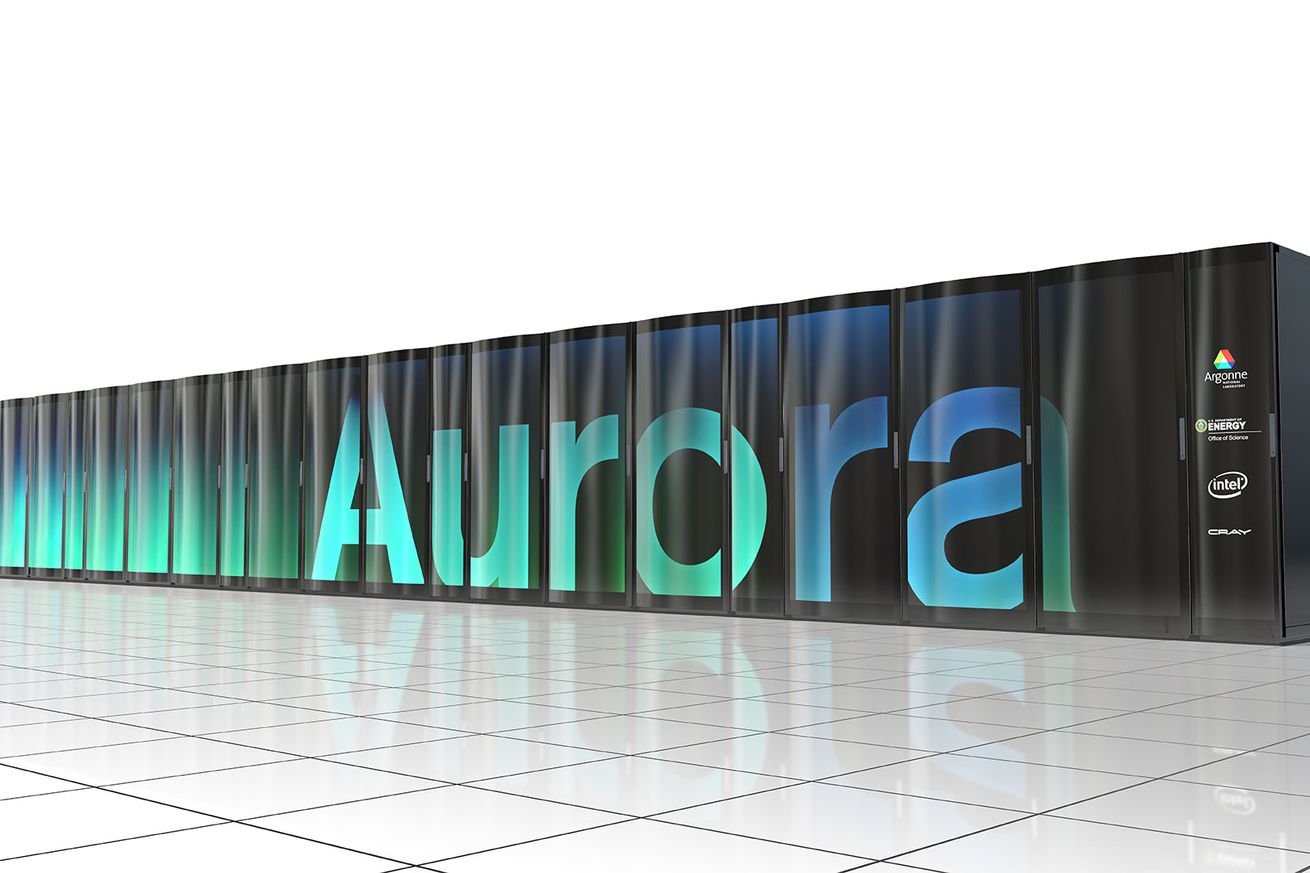
Details of America's next-generation supercomputer were revealed at a ceremony attended by Secretary of Energy Rick Perry and Senator Dick Durbin at Argonne National Laboratory today. The Department of Energy's new supercomputer will be built by Intel at Argonne, and it will be the first of its kind in the United States.
The supercomputer, dubbed Aurora, is scheduled to be fully operational by the end of 2021, as the DOE attempts to keep pace with China in a supercomputing arms race. A February 2018 story in Science reported that the top two Chinese computers were more powerful than all of the DOE's 21 current supercomputers combined. Summit, at Oak Ridge National Laboratory in Tennessee, reclaimed the title of most powerful supercomputer from the Chinese when it went live last summer; China, however, is expected to reveal their first exascale computer in 2020, once again jumping ahead of the United States. The hope is that Aurora � with 50 times the computational and analytic power of Summit � will reclaim the title when it comes online.
"We don't know what everybody else is doing, so we can only really talk to the plans in the United States," Rick Stevens, associate laboratory director for computing, environment, and life sciences at Argonne, told reporters on an informational conference call on Friday ahead of the announcement. "We know other countries are working on the path to exascale, but we don't know precisely when they will deploy their systems."
Aurora was announced as a standard supercomputer in 2015, but got scaled up to exascale in 2017. Exascale supercomputers can operate at quintillion calculations per second, according to the DOE's Exascale Computing Project. A joint effort with the National Nuclear Security Administration, the project's intent is to accelerate American supercomputing power to exascale by 2021, by building computers like Aurora.
"So this system will be an excellent platform for both traditional high-speed computing applications" as well as data analytics, Stevens said. Aurora will be particularly optimized to analyze the streaming data produced by the DOE's array of instruments, including telescopes, particle accelerators, and various detectors, Stevens explained.
Reflecting recent trends in machine learning-enhanced science, Aurora will also be set up as a perfect platform for deep learning. Over 100 artificial intelligence applications are in development across the national laboratories alone, Stevens told reporters.
"We kind of think of this as simulation data and machine learning as the targets for such a machine," Stevens said.
Scientists working in myriad fields may find their work enhanced by the supercomputer. Material science � particularly the building of better battery materials and materials useful for alternative energy like solar, wind, and nuclear power � and climate change prediction are projects Stevens told reporters about. A joint agreement with the Department of Veterans Affairs will set the supercomputer's data-parsing ability on identifying risk factors for suicide and best practices for intervention. That project in particular speaks to the possible clinical and humanistic leaps exascale computing may be able to provide.
Aurora's defense applications could also include testing and physics analysis of strategic weapons, as the U.S. no longer physically tests "actively strategic weapons", Paul M. Dabbar, undersecretary for science at the DOE, told reporters on the conference call. If Aurora is assigned those tasks, it would join other DOE supercomputers that are virtually testing America's nuclear arsenal.
Aurora will be built by Intel Corporation in partnership with Cray and Argonne, a contract with an estimated value of $500 million, Dabbar said. Rajeeb Hazra, Intel corporate vice president and general manager of the company's enterprise and government group, declined to reveal details of Aurora's architecture with reporters. Additionally, full technical specifications � including basics like how much power Aurora will eat � are not being released at this time. Hazra told reporters that Intel plans to work with leading research and academic programs to ensure that Aurora will be useful from the moment it is booted up.
The DOE believes that exascale computing will have a multiplier effect for scientific discovery as machine learning methods and artificial intelligence become more common and crucial, Stevens said.
"In general, we think this will create another wave of acceleration across many areas of science, technology, and health care."
Post a Comment